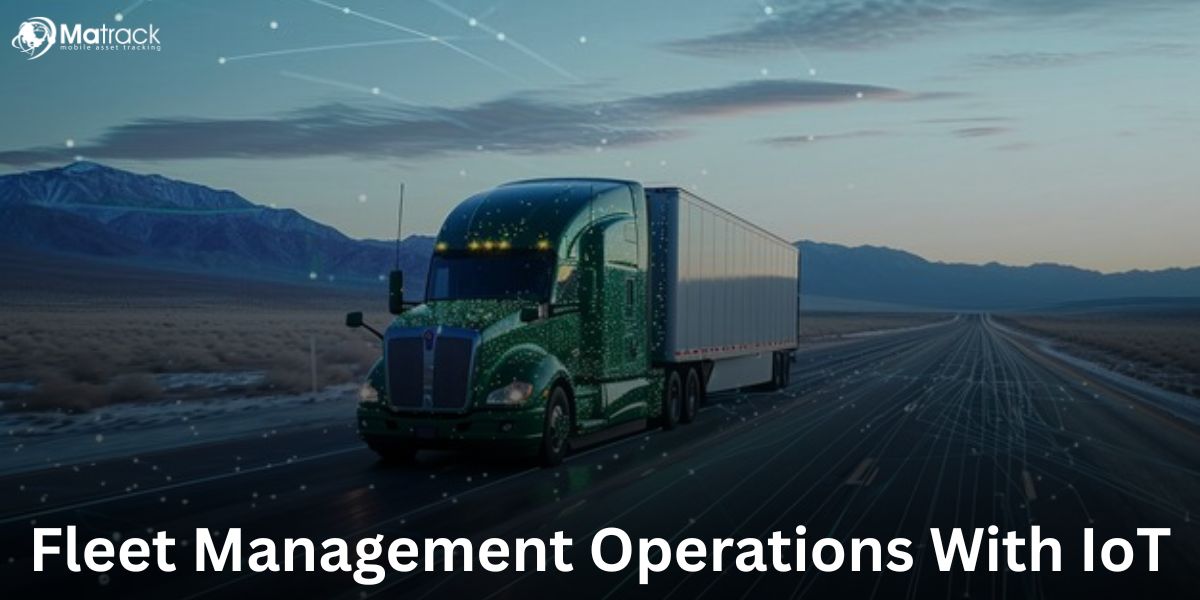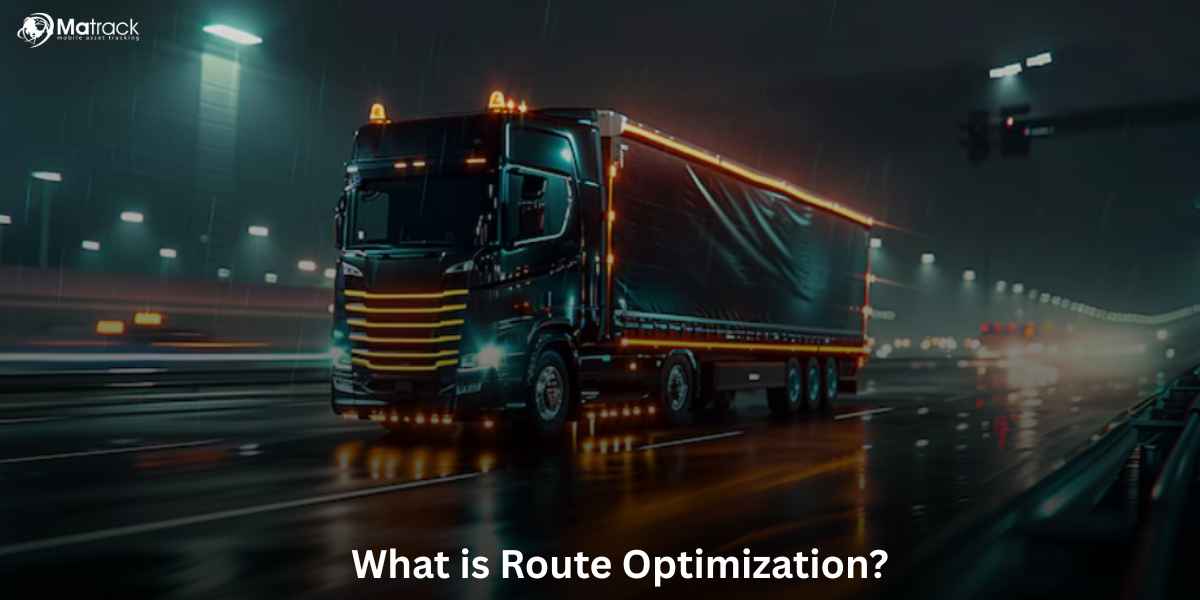Key Takeaways
- IoT transforms fleet management by enabling real-time vehicle tracking, predictive maintenance, and fuel efficiency monitoring.
- Telematics, GPS, AI analytics, and IoT sensors improve fleet security, optimize routes, and ensure regulatory compliance.
- Industries like logistics, public transport, healthcare, and construction leverage IoT to reduce costs and enhance operations.
- Despite challenges like integration complexity and data security, IoT adoption is essential for future-ready and efficient fleet management.
What is IoT in fleet management?
IoT refers to the network of connected devices that collect and exchange data in real time. In fleet management, IoT-enabled sensors, telematics systems, and cloud computing work together to monitor vehicle performance, driver behavior, fuel consumption, and asset tracking.
How IoT Works in Fleet Operations
- Data Collection: IoT sensors gather information on vehicle health, fuel usage, route efficiency, and driving patterns.
- Data Transmission: The collected data is transmitted via wireless networks such as 4G, 5G, or satellite communication.
- Data Analysis: Advanced analytics platforms process the data to generate insights on fleet performance and suggest improvements.
- Actionable Insights: Fleet managers receive real-time alerts and reports to optimize vehicle utilization, improve safety, and reduce operational costs.
Benefits of IoT in Fleet Management
Real-Time Vehicle Tracking
IoT-powered GPS and telematics allow fleet managers to track vehicle locations, routes, and stops in real time. This ensures:
- Optimized route planning to reduce fuel costs.
- Faster response times in case of route deviations or emergencies.
- Improved security by preventing unauthorized vehicle usage.
Predictive Maintenance
IoT sensors continuously monitor vehicle health, including engine diagnostics, tire pressure, and fluid levels. This data enables:
- Early detection of mechanical issues before they lead to breakdowns.
- Reduced downtime and repair costs through scheduled maintenance.
- Extended vehicle lifespan by preventing excessive wear and tear.
Fuel Efficiency Optimization
Fuel is one of the highest operating costs in fleet management. IoT solutions help by:
- Identifying fuel-wasting behaviors like excessive idling or aggressive driving.
- Monitoring fuel consumption patterns for each vehicle.
- Providing route optimization recommendations to minimize fuel usage.
Enhanced Driver Safety & Behavior Monitoring
Driver safety is a top priority for fleet managers. IoT technology monitors driver behavior and provides:
- Alerts for harsh braking, speeding, and rapid acceleration to improve driving habits.
- AI-driven fatigue detection to prevent accidents caused by drowsiness.
- Remote coaching and feedback for drivers based on performance data.
Asset & Cargo Tracking
IoT-enabled sensors ensure the safety of assets and cargo in transit by:
- Providing real-time cargo tracking to prevent theft or loss.
- Monitoring temperature and humidity levels for perishable goods.
- Detecting unauthorized access to cargo compartments.
Compliance & Regulatory Adherence
Fleet operators must comply with government regulations and safety standards. IoT streamlines compliance by:
- Automating Hours of Service (HOS) tracking for drivers to meet legal work-hour limits.
- Recording vehicle inspection reports for regulatory authorities.
- Ensuring adherence to emissions regulations through real-time vehicle diagnostics.
Key IoT Components in Fleet Management
Telematics Devices
Telematics systems combine GPS tracking, onboard diagnostics (OBD), and wireless communication to collect real-time vehicle data.
Read more: What Is Telematics?
IoT Sensors
Sensors are embedded in vehicles to monitor:
- Tire pressure (TPMS)
- Engine performance
- Cargo weight and conditions
- Fuel levels and consumption rates
GPS & Geofencing Technology
GPS tracking provides real-time location updates, while geofencing sets virtual boundaries for vehicles, sending alerts if a vehicle moves outside the designated area.
Cloud-Based Data Management
IoT-generated data is stored and analyzed in cloud-based platforms, providing remote access to fleet managers for real-time decision-making.
AI & Machine Learning Algorithms
AI-driven analytics help predict vehicle maintenance, optimize routes, and improve fuel efficiency based on historical data.
Mobile & Web Applications
Fleet managers and drivers use mobile apps to access fleet data, receive alerts, and communicate with the operations center.
Real-World Applications of IoT in Fleet Management
Logistics & Transportation
- Real-time shipment tracking for improved customer service.
- Optimized delivery routes to reduce operational costs.
- Automated scheduling to maximize fleet efficiency.
Public Transportation
- Passenger tracking systems for better schedule management.
- Predictive maintenance to ensure buses and trains run without disruptions.
- Fuel and energy consumption tracking for eco-friendly operations.
Construction & Heavy Equipment
- Remote monitoring of construction vehicles for improved site efficiency.
- Usage tracking to prevent unauthorized use of heavy machinery.
- Maintenance alerts to avoid costly equipment failures.
Know more: Construction Fleet Management
Emergency & Healthcare Fleets
- Ambulance route optimization for faster emergency response.
- Real-time monitoring of medical equipment inside vehicles.
- Driver behavior monitoring to ensure patient safety.
Food & Cold Chain Logistics
- Temperature-controlled transport monitoring to prevent food spoilage.
- GPS-enabled delivery tracking for food safety compliance.
- Automated refrigeration control based on IoT sensors.
Challenges in Implementing IoT for Fleet Management
Despite its benefits, IoT adoption in fleet management comes with certain challenges:
High Initial Costs
Implementing IoT requires investment in hardware, software, and cloud services.
Data Security Concerns
With real-time tracking and sensitive data transmission, fleets are vulnerable to cyber threats.
Integration Complexity
Fleet operators using legacy systems may face difficulties integrating new IoT solutions.
Connectivity Issues
Rural and remote locations may experience connectivity issues, affecting real-time tracking.
Data Overload
Managing and interpreting large volumes of fleet data requires advanced analytics tools.
Conclusion
IoT is revolutionizing fleet management by enhancing efficiency, safety, and cost-effectiveness. With real-time tracking, predictive maintenance, fuel optimization, and AI-powered insights, fleet operators can make smarter decisions and improve their bottom line.
While challenges such as high costs and security risks exist, the future of IoT-driven fleet management looks promising with technological advancements. Businesses investing in IoT solutions today will stay ahead in the competitive transportation and logistics industry.
The shift towards data-driven fleet management is inevitable, and embracing IoT will ensure a more sustainable, efficient, and profitable fleet operation.

